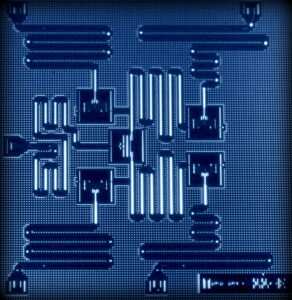Predictions of Quantum Mechanics and Quantum mechanics are vital parts of modern physics, unveiling a captivating and often counterintuitive description of the microscopic world. This revolutionary theory, developed in the early 20th century, provides a framework for understanding the behavior of particles at the quantum scale. Here we are going to discuss some predictions that distinguish it from classical physics:
Wave-Particle Duality:
Prediction: It asserts that particles, such as electrons and photons, exhibit both wave-like and particle-like properties. This duality is encapsulated in the wave-particle duality principle.
Experimental Confirmation: The double-slit experiment, where particles create an interference pattern like waves when not observed and behave like particles when observed, exemplifies wave-particle duality.

Quantum Superposition:
Prediction: Predictions of Quantum Mechanics in Superposition allow particles to exist in multiple states simultaneously. This means a quantum system can exist in a combination of different states until observed.
Example: A quantum bit or qubit can be in a superposition of both 0 and 1 states at the same time, enabling the parallel processing capability in quantum computers.
Quantum Entanglement:
Prediction: Quantum entanglement is a phenomenon where two or more particles become correlated in such a way that the state of one particle instantaneously influences the state of the other, regardless of distance.
EPR Paradox: The Einstein-Podolsky-Rosen (EPR) paradox and subsequent experiments have confirmed the non-local correlations inherent in quantum entanglement.
Evolution of Quantum System— click here
Quantum Uncertainty Principle:
The Heisenberg Uncertainty Principle asserts that it is impossible to simultaneously know the precise position and momentum of a particle. The more accurately one is known, the less accurately the other can be determined.
Limitation on Precision: This principle introduces a fundamental limit to the precision with which certain pairs of properties of a particle can be known.
Quantum Tunneling:
Prediction: Quantum Tunneling is the phenomenon where particles can pass through potential barriers that classical physics would deem impassable.
Applications: It is crucial in understanding phenomena like radioactive decay and has practical applications in technologies such as tunnel diodes and scanning Tunneling microscopy.
Quantum States and Probabilities:
Prediction: It describes the state of a system using a wavefunction, which contains information about the probabilities of finding a particle in various states upon measurement.
Probabilistic Nature: Unlike classical mechanics, quantum mechanics inherently involves probabilistic outcomes for measurements due to the probabilistic nature of wavefunctions.
Quantum Interference:
Prediction: Quantum interference occurs when the probability amplitudes of different quantum paths either reinforce or cancel each other, leading to observable effects.
Interference Patterns: Interference is evident in experiments like the double-slit experiment, where waves interfere to produce characteristic patterns.
Predictions of Quantum Mechanics in Quantum States Collapse:
The collapse of the wavefunction occurs when a measurement is made, and the system transitions from a superposition of states to a definite state.
Observer Effect: The act of observation fundamentally influences the outcome of a quantum system, leading to the collapse of its state.
Conclusion
Quantum mechanics continues to be a rich field of exploration, pushing the boundaries of our understanding of the universe. Its predictions, though challenging to our classical intuitions, have been consistently confirmed through numerous experiments, showcasing the remarkable accuracy and explanatory power of this quantum framework.
Frequently Asked Questions (FAQs)
What is wave-particle duality in quantum mechanics?
Ans- Wave-particle duality is the quantum mechanical principle that particles, such as electrons and photons, exhibit both wave-like and particle-like properties. This duality is experimentally confirmed through phenomena like the double-slit experiment.
What is quantum superposition?
Ans-Quantum superposition allows particles to exist in multiple states simultaneously. In a superposition, a quantum system can exist in a combination of different states until it is observed.
What is quantum entanglement?
Ans-Quantum entanglement is a phenomenon where two or more particles become correlated in such a way that the state of one particle instantaneously influences the state of the other, regardless of distance.
What is the Heisenberg Uncertainty Principle?
Ans- The Heisenberg Uncertainty Principle states that it is impossible to simultaneously know the precise position and momentum of a particle. The more accurately one property is known, the less accurately the other can be determined.
https://www.tandfonline.com/doi/abs/10.1080/09500340701736304


2 thoughts on “Predictions of Quantum Mechanics: Peering into the Quantum world”